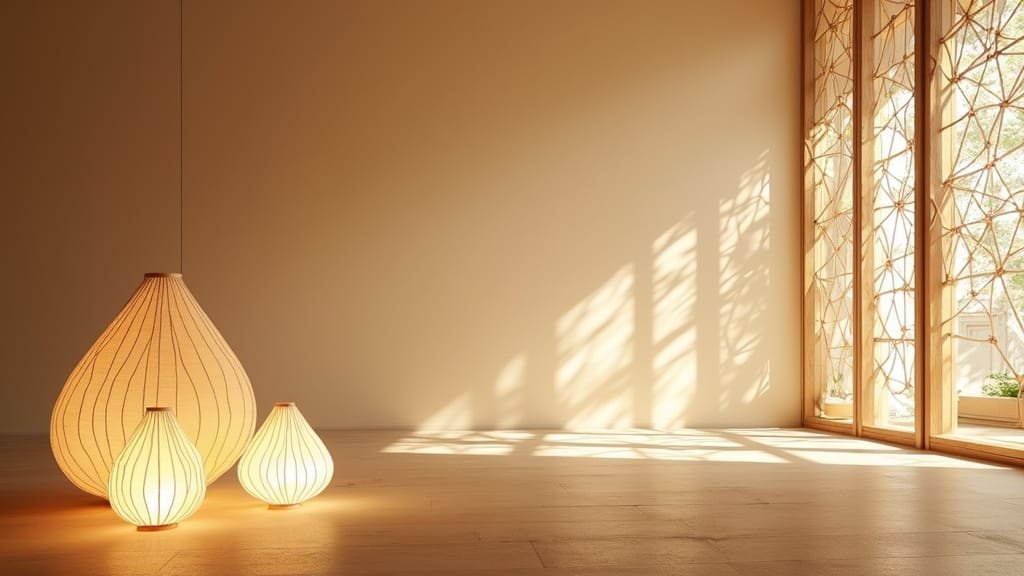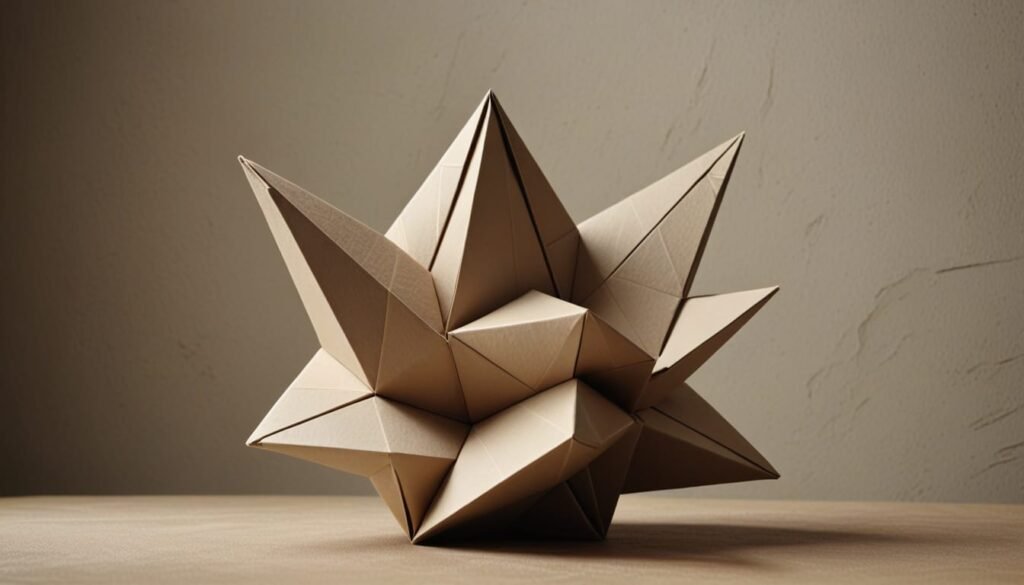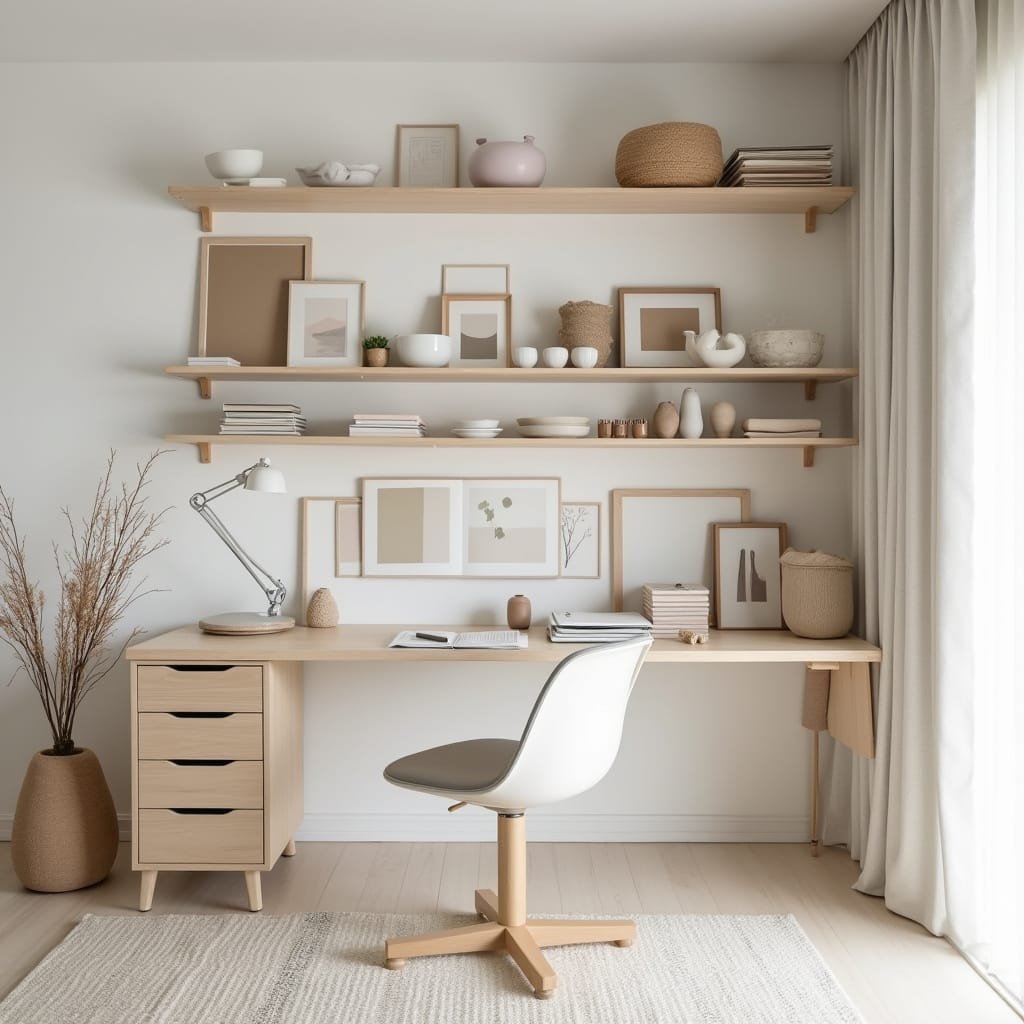Your cart is currently empty!
Stay in Touch!
Get updates about new artwork and upcoming events.
Get updates about new artwork and upcoming events.
—
by
In recent years, the term quiet luxury has entered the design and lifestyle lexicon as more people seek calm, intentional living over conspicuous consumption. Quiet luxury isn’t about labels or trends. It’s not about what others can recognize—it’s about how a space makes you feel. It’s thoughtful, understated, elegant without being loud. In this pursuit of calm and refinement, one ancient art form stands out as a perfect embodiment: origami.
Origami—the art of paper folding—brings a meditative stillness and sculptural grace to interiors. When translated into home decor or contemporary sculpture, origami shapes offer more than just visual appeal. They bring with them geometry, balance, symbolism, and softness that perfectly align with the philosophy of quiet luxury.
This post explores how origami shapes and mixed media paper sculptures can transform your environment into a peaceful sanctuary, enriching it with the quiet confidence of refined artistry.
Before diving into the role of origami in shaping tranquil interiors, it’s important to understand what quiet luxury truly means. Often associated with high-end fashion and architecture, the term describes an aesthetic that values craftsmanship over branding, restraint over flamboyance, and timelessness over trendiness.
In interiors, quiet luxury is expressed through:
Quiet luxury doesn’t scream for attention. Instead, it invites you to pause, notice the details, and appreciate the stillness. Origami, with its precise folds and humble materials, fits beautifully into this aesthetic.

Origami is grounded in mathematical precision. Every fold is calculated, every shape a result of symmetry, proportion, and rhythm. When we look at origami—whether a simple crane or a complex tessellation—our brains recognize these patterns as pleasing and organized. This sense of order and structure contributes to a peaceful interior, aligning with the values of quiet luxury.
There is a psychological benefit to geometric forms: they promote clarity and calm. Origami installations, especially modular or tessellated designs, become visual mantras—repeating forms that soothe the eye and quiet the mind.
In spaces that embrace quiet luxury, origami shapes act like visual punctuation marks—subtle, elegant, and intentional. They slow the viewer down, encouraging reflection and serenity.
One of the pillars of quiet luxury is the elevation of humble materials. Instead of flashy surfaces, there’s a preference for tactile, matte, organic finishes—wood grain, hand-dyed linen, stone with natural veining. Paper belongs in this category.
In the world of origami sculpture, paper isn’t just a surface—it’s a medium of transformation. What starts as a flat, fragile sheet becomes a three-dimensional form through nothing but folding and intention. This transformation echoes the quiet luxury philosophy: understated strength, hidden depth, and refinement through process.
When paired with other natural materials—such as wood panels or soft textiles—origami sculptures bring warmth and character to a space without overwhelming it. The lightness of paper contributes to a feeling of airiness, making rooms feel more open and breathable.
One of the most overlooked aspects of quiet luxury is the interaction of light and shadow in a room. While minimalist spaces may seem simple at first glance, they’re often designed with light in mind—how it moves through a space, how it softens corners, and how it adds drama in subtle ways.
Origami sculptures are exceptional at catching and reflecting light. Their folded surfaces create dynamic shadows that shift throughout the day. These changing patterns give life to a wall or a shelf, allowing a room to feel different from morning to night—without ever rearranging a thing.
The interplay between structure and softness, light and dark, helps create that elusive feeling of peace. A well-placed origami sculpture becomes a quiet focal point—rich with texture, but never busy. This is quiet luxury at its finest.

Quiet luxury is not only about aesthetics. It’s about meaning—the story behind the object, the intentionality of its placement, the memory it evokes. Origami is full of symbolic value, deeply rooted in Japanese culture but resonating universally.
When incorporated into art or home decor, these shapes bring more than just visual calm—they bring emotional resonance. A wall piece featuring dozens of carefully folded modules isn’t just beautiful—it represents patience, craftsmanship, and the journey from chaos to order.
This narrative depth adds to the quiet luxury of a space. It allows the viewer to connect with the object emotionally, making the space feel more grounded and intentional.
In contemporary sculpture, origami is no longer confined to paper cranes. Artists are using fine art paper, hand-painted washes, wood panels, and even metallic finishes to create sculptures that merge tradition with modern sensibilities.
These mixed media origami works align with quiet luxury because they:
Rather than competing with other decor elements, origami sculptures in mixed media settings enhance the environment. They elevate corners, alcoves, or gallery walls with a restrained sense of elegance that feels both fresh and timeless.

If you’re looking to integrate quiet luxury into your space, here’s how origami shapes can help cultivate a more peaceful and sophisticated atmosphere:
Choose pieces in soft whites, warm grays, gentle taupes, or dusty pastels. These tones bring a calming influence and integrate easily with high-end interiors that favor subtlety over saturation.
Installations made of repeated folded forms—like radial designs or geometric grids—bring rhythm to a space. Repetition is inherently soothing and adds a sense of gentle order.
Seek out artworks that combine origami with wood, canvas, or hand-painted surfaces. These mixed media pieces provide a tactile experience and visual warmth associated with luxury interiors.
Place origami art where natural light can highlight the folds and shadows. These changes over time add dimension and keep your environment visually engaging without being overwhelming.
Use origami shapes to define moments of pause: a meditation corner, a serene bedroom wall, or an entryway designed for calm transitions. In these spaces, origami becomes more than decor—it becomes an experience.
There’s something inherently humble about origami. It begins with paper, yet through human hands and artistic intention, it becomes sculptural, meditative, and deeply elegant. It tells a story without shouting. It holds space without taking it over.
In the language of interior design, origami whispers.
That’s what makes it the ultimate symbol of quiet luxury. It offers:
In a time when we’re constantly bombarded with noise—visual, digital, emotional—spaces that prioritize quiet luxury offer refuge. And within that refuge, origami art offers transformation: from stillness comes form, from form comes emotion, and from emotion comes beauty.
Here are a few ways to use origami shapes to bring quiet luxury into everyday environments:
Install a monochrome origami wall sculpture above a neutral-toned sofa for an elevated yet calming aesthetic. Choose a modular design to complement your architecture’s geometry.
Use a large origami mandala in soft whites or pale grays as a headboard alternative or wall art above the bed. The folding symmetry adds a touch of serenity.
Place a single small-scale origami sculpture on your desk to foster clarity and focus. The tactile folds can serve as a visual reset during breaks.
Set the tone for your home with an elegant origami piece by the front door. Choose muted tones and mixed materials to introduce texture and craftsmanship from the very first step.
For hospitality or retail environments that aim to feel upscale yet relaxing, origami sculptures offer both branding appeal and ambiance—embodying quiet luxury in every fold.

Quiet luxury is more than a design trend. It’s a lifestyle shift—a movement toward spaces and objects that reflect care, presence, and inner peace. Origami, with its ancient wisdom and modern relevance, offers a beautiful path toward creating environments that support well-being and artistic elegance.
Whether you’re curating a calming corner in your home, designing a luxury boutique, or simply seeking visual peace, origami shapes invite you to experience refinement through restraint. They prove that less is not only more—it’s often more meaningful.
Want to bring quiet luxury into your space with origami sculpture?
Explore my available works or commission a custom piece tailored to your environment and aesthetic. Each piece is handcrafted with intention, designed to speak quietly—and powerfully.